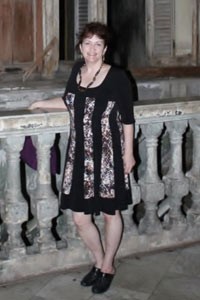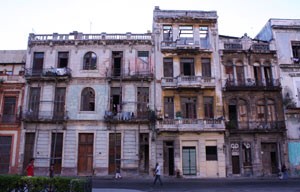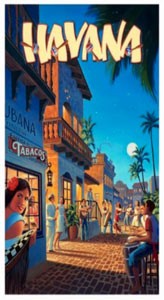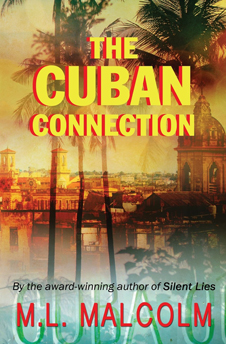
M.L. Malcolm in Cuba, 2012
Set in New York and Havana during 1960, The Cuban Connection introduces ace reporter Katherine O’Connor, who has a nose for news and an inclination to use it in very dangerous places. Working undercover in Castro’s Cuba, she gets a little too up-close-and-personal with Castro’s thugs, a priest who may be working for the CIA, and a little boy whose survival is mysteriously linked to the welfare of Katherine’s own mother—not to mention falling for a man who may be a Soviet spy.
The Cuban Connection incorporates actual historical events into a page-turning tale that is by turns riveting, poignant, and hilarious—not unlike Katherine O’Connor herself.
My main characters always interact with real historical figures, and Katherine O’Connor is no exception. She rubs elbows with Fidel Castro, and comes to the attention of James Copley, of the Copley News Service, one of the many Gentlemen of the Press who were quite happy to share any information they unearthed with the FBI and the CIA. This “dual function” of well-respected journalists began during World War II and continued until 1976, when congressional hearings on the subject disclosed that hundreds of individuals, from all the major news organizations, both print and broadcast, were cooperating closely with the CIA and FBI.

Typical state of many homes in Havana
I became interested in writing about Cuba when I came across “Operation Pedro Pan.” In late 1960, Cuban parents began to send their children, unaccompanied, to the United States. This became the largest peacetime migration of unaccompanied children in history. Between December of 1960 and November of 1962, over 14,000 children were sent to the U.S. They expected to be reunited with their families quickly. Some were. For most, it took years, and some never saw their parents again.

Che Guevara, Cuba’s biggest export
What, I wondered, could have been going on in Cuba to make thousands of parents send their children into the arms of strangers?
So I started my research. The answer was that for most middle class and blue collar Cubans, life became intolerable under Castro. Armed resistance formed against Castro when he refused to hold elections, and the hammer came down. Wooed by the Soviets, Castro adopted their methods of using terror to limit sedition.

Tourism poster from pre-Castro days
I visited Cuba in 2012.
The Castro regime is a relentlessly repressive, two-tiered system, wherein members of the ruling elite live well, but most Cubans do not. Many buildings—sometimes whole neighborhoods—are literally collapsing from decay and lack of maintenance. Rations are small. Doctors have excellent training, but their equipment is outdated, and lack of electricity hinders many procedures.
Any attempt to foster opposition is still met with extreme brutality. What small progress has been made toward economic freedom is designed to let a little steam out of the pressure cooker of angry resentment, but any privilege granted—like a permit to open a private restaurant—can be taken away at any time, for any reason.
Hopefully when the Castros do pass away, the ruling elite will allow some real change to occur, and Cubans can regain their liberty.

